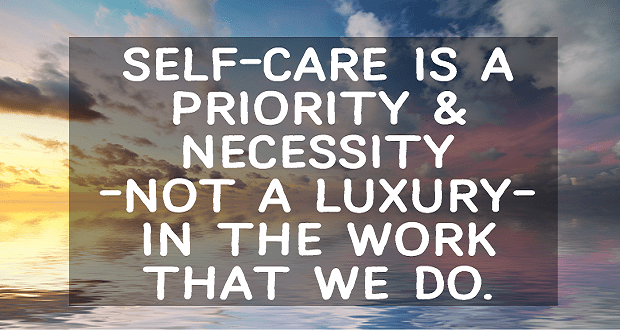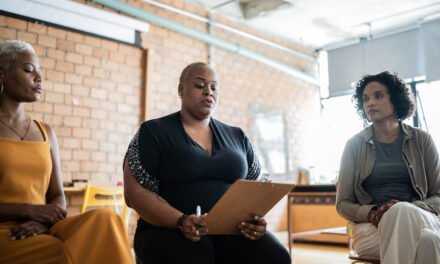
Organizations can play a significant role in addressing systemic racism. For that to happen, though, we need a shift in the conversations.
Many companies today seem to spend a lot of effort on programs highlighting the company’s zero tolerance for discrimination, how the golden rule is now a platinum rule, and how the melting pot has evolved into a tossed salad (or another comparable metaphor).
While these conversations remain important, we still need to keep in mind that, at best, their primary purpose is to raise awareness.
Raising employees’ awareness is not sufficient, though. We also need opportunities for deepening our understanding and for honest conversations on the inequities that are still in place in our society.
Now, more than ever, organizations need to create dialogue spaces where employees can share their experiences, their stories, and how they are being impacted by what is happening in society. These dialogue spaces should create opportunities for deep listening, the discovery of new truths, and the broadening of perspectives on the impact of racial inequities.
What Is Preventing Organizations From Having Much-Needed Conversations About Race
Employees do not operate in a vacuum, and it would be unrealistic to assume they are not bringing the outside world with them as they clock in.
Despite the need for dialogue spaces where these hard conversations can take place, for the most part, they are not happening. Below are just a few reasons why.
1. The Belief That Silence Is the Best Option
The first challenge organizations will have to address is the fact that genuine conversations about race are a rare experience for many individuals. In fact, for many, race feels like a taboo subject.
Even when these conversations happen, they tend to be accompanied by a lot of anxiety and fear. Many individuals feel they don’t know what to say; and when they say something, they fear they will say the wrong thing or inadvertently offend someone.
No wonder saying nothing seems to be the default mode around issues of race and racism. We must practice comfort leaning into discomfort if we are to make progress.
2. The Belief That We Should Not See Race
In addition to this culture of silence around race and racial inequities, many individuals in this country, especially white people, have been socialized to believe that talking about race is racist.
The end result of this erroneous thinking is colorblindness. This is also the reason we find ourselves immersed in the proverbial “Catch-22” situation: How can we have conversations about race if we don’t see race?
Those charged with leading these conversations in the workplace need to help employees understand that colorblindness is not the answer to ending racial inequality. In fact, it prevents us from treating race as an important and pressing social issue to be tackled since it suggests race is irrelevant.
The bottom line is that we need to move beyond the desire to ignore race (colorblindness) so we can have much-needed conversations about race.
3. The Belief That Race Discrimination Is No Longer an Issue
Another big challenge is the idea that many individuals today believe that racism is no longer an issue in this country. Those who believe this often argue that slavery ended over 150 years ago and with the advent of the Civil Rights movement, it is clearly time to move on.
And then we look at the real picture. While slavery did end, justice has yet to be materialized for Black people and other marginalized groups in this country. In the book Two Nations: Black and White, Separate, Hostile, Unequal (Scribner, 2003), author Andrew Hacker paints a stark picture of the racial inequities in this country.
Nowhere are these inequities more prevalent than in our educational system. Studies show that students attending schools in low-income areas are being taught by teachers who lack adequate preparation and with limited access to technology or other innovative pedagogical resources. These schools are often overcrowded, in disrepair, and unsafe because of acts of racism or violence. These inequities in the educational system will plague Black, Brown, and poor children throughout their lives.
In many organizations, unconscious bias still plays a role in preventing them from diversifying the workforce. In fact, researchers at the University of Chicago and MIT conducted a study to measure racial discrimination in the hiring process. For this study, labeled “Are Emily and Greg More Employable than Lakisha and Jamal?,” they sent out approximately 5,000 resumes in response to ads for various positions.
All companies in the study claimed to be seeking diversity. Each company received four resumes (white/average; white/highly skilled; Black/average; Black/highly skilled). Results showed that white names received 50 percent more callbacks than Black names. Even the average, typically white-named candidates received more callbacks than the highly skilled typically Black-named candidates.
In the end, it did not matter that the organization projected an image of being “an equal employment employer.” Although this study was conducted in 2004, recent studies have shown similar results.
The Civil Rights Act of 1964 was supposed to eliminate discrimination based on race, color, religion, and national origin. Clearly, it has fallen significantly short of its intent of leveling the playing field and guaranteeing equality and justice for all. [Editors’ note: To learn more about how modern-day algorithms perpetuate bias, check out the resources here.]
4. The Belief in the Myth of Meritocracy
Meritocracy is a social system in which advancement in society is based on an individual’s capabilities and merits rather than on the basis of family, wealth, or social standing. In the workplace, people may assume that an individual’s success, promotion, or advancement depends solely on skills, experience, and hard work.
The problem with this myth is that it assumes we all have the same opportunities, which is not true. Consider:
- Unemployment among African Americans is twice that of whites.
- As of 2020, Black families have a median household income of just over $41,000, while white families have a median household income of more than $70,000.
- Black people are overrepresented in occupations such as hotel maids, postal clerks, janitors, and cleaners and are severely underrepresented in occupations such as engineering, law, medicine, and technical fields.
- African Americans and people of color are disproportionately represented in incarceration due to drug offenses — even though research shows that whites, particularly white youth are more likely to engage in drug crime than people of color. In fact, while Blacks make up 13 percent of the population, they account for nearly 38 percent of state and federal prisoners.
Clearly, the playing field is hardly leveled.
We cannot achieve equity without addressing these systemic imbalances in our society and, quite possibly, in our organizations. Treating everyone the same (equality) assumes everyone is standing on equal footing. The reality is that there are systems, policies, and practices that must be changed for us to achieve a fair, equitable, and inclusive organization, and society.
Two Ways Business Leaders Can Positively Impact Their Organization’s Support of The Current Social Justice Movement and Promote AntiRacism
1. Do away with the culture of silence around racial inequities.
Racism is one of those topics that have long been considered taboo in the workplace. In fact, silence seems to be the default mode.
This culture of silence around racial inequities and its impact is often reinforced because it has been ingrained into our collective psyches that the workplace is not an appropriate place for these conversations. Many white people avoid this conversation for fear of saying the wrong thing or appearing racist or ignorant. If you are a person of color and you work in a predominantly white organization, you may avoid this conversation because it is exhausting to always play the role of educator.
However, avoiding these much-needed conversations is no longer an option. Organizations do not operate in a vacuum, and employees (some more than others) will bring in the burdens of the outside world — be it stress, trauma, fear, or hurt. These emotions will, most certainly, impact productivity and engagement. While conversations about race will indeed be uncomfortable for many, do not underestimate the tremendous impact of insensitive jokes, the racially charged narratives, or the comments many employees of color hear implying they were only hired so the company could reach numerical benchmarks. Organizations must create opportunities for honest discussions on racial disparities and how to address the systemic disadvantages that are still in place both in our society and in the organization.
2. Bring an Intentional “Systems Lens”
It is time for companies to start adding to their initiatives and training curricula necessary steps for creating a culture where racism will be addressed in a systematic manner.
Mastering Cultural Differences offers a three-hour training focusing on our historical and structural inequities from a race perspective. In this highly interactive program, I work with clients, so they recognize the need to have conversations about race, understand the need to overcome colorblindness, learn the steps to engage in a dialogue about race, understand the history of racism and the many histories we don’t learn, recognize systemic racism, and learn strategies to be an ally. [Editors’ note: For more resources on how to make systemic change a reality, check out The Winters Group’s new book, Racial Justice at Work: Practical Solutions for Systemic Change (Berrett-Koehler, 2023).]
More than ever, organizations need to provide opportunities that create a shared understanding of race and the inequities that are still in place. Creating safe dialogue spaces for difficult conversations to take place sends a signal that employers care about their employees’ well-being … and to be sustainable, these conversations cannot be isolated, one-off events. They need to be immersed in the organization’s DEIJ (diversity, equity, inclusion, and justice) strategic plan, there needs to be accountability, and progress toward racial equity needs to be measured.
Taking Personal Responsibility: What Each and Every One of Us Can Do to Be a Change Agent
While organizations can play an essential role in addressing the systemic inequities that still plague our society, every one of us can play a role in promoting race reconciliation.
Below are 10 steps you can take toward that:
- Become informed about people from other races and cultures. Remember that there are many histories and many of them are not being taught. You can start by reading A Different Mirror: A History of Multicultural America (Little, Brown and Company, 1993) by Ronald Takaki. The book addresses the economic and political history of many groups in the United States, with considerable attention given to instances of racism.
- Have the courage to step up for inclusion when you hear a derogatory comment—even if it was not directed at you. However, do it in a manner that invites dialogue. For a free PDF with strategies for reacting in a way that invites dialogue, email me at luiza@masteringculturaldifferences.com.
- If you offend someone, recognize what you did. Don’t explain, don’t deny, and don’t minimize it by saying “I didn’t mean it. It was only a joke. Lighten up!” Just apologize. This is an opportunity for you to (a) learn about the impact your words had on someone else, and (b) recognize that there is still self-work you need to do.
- Learn about your unconscious biases and how they impact others. Start by taking the Implicit Association Test (IAT), which is the most prominent method of measuring implicit bias and is available online, for free. I suggest you complete at least two of the tests. After that, find a colleague and discuss your findings around:
- What surprised you about the tests?
- What, if anything, shocked you about your results?
- Do you have hidden biases that were uncovered?
- Understand how your power and privileges impact others. If you are new to this, you can start by reading researcher Peggy McIntosh’s article “White Privilege: Unpacking the Invisible Knapsack” and then having a group discussion about it.
- Do your part to make your workplace a safe place for individuals to have conversations about racism and other uncomfortable topics. The two strategies presented earlier should help.
- Participate in community projects that focus on reducing racial disparities.
- Advocate for curricula reform. What our children learn in school should reflect the diversity of our nation.
- Recognize the pain individuals are bringing with them to the workplace, schools, churches, etc. because of recent events, including the killings of unarmed Black men by police officers. How do the Black individuals you come in contact with feel? Have you stopped to hear their perspective? Also, read “A Point of View: How Many More Have to Die? What Each and Every One of Us Can Do.” This blog was written after the death of George Floyd in Minneapolis and offers some action steps.
- Above all: make a personal commitment and take action within your sphere of influence to help reduce racial disparities, lessen discrimination, and improve race relations among all.
These are individual actions that can help you understand the reality that Black people face every day as a consequence of persistent anti-Black racism. We can no longer claim ignorance about injustice. It is time to get uncomfortable, so we can all move forward together. The current environment is calling on all of us to take a strong antiracist stance. I hope you use the power and privilege you have been granted to advocate for a more equitable and just society for all.


















